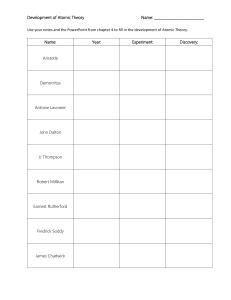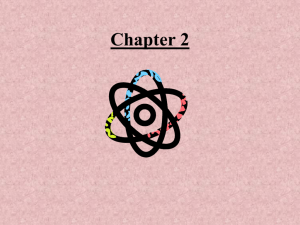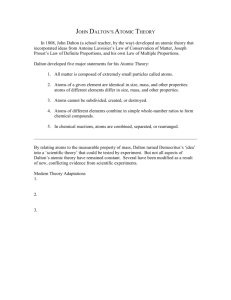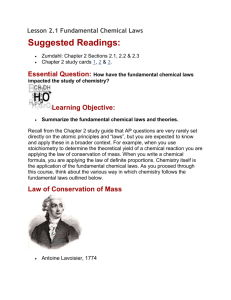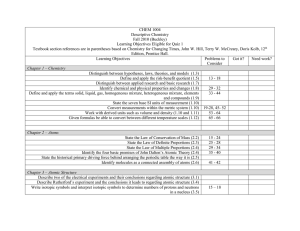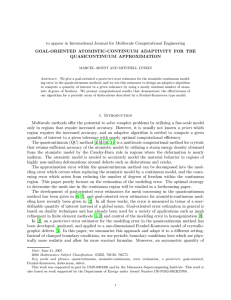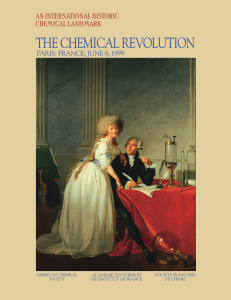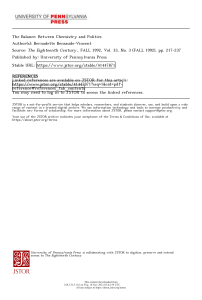THINGS TO KNOW CHAPTER 2 CHEM 101 Atoms Overview
advertisement
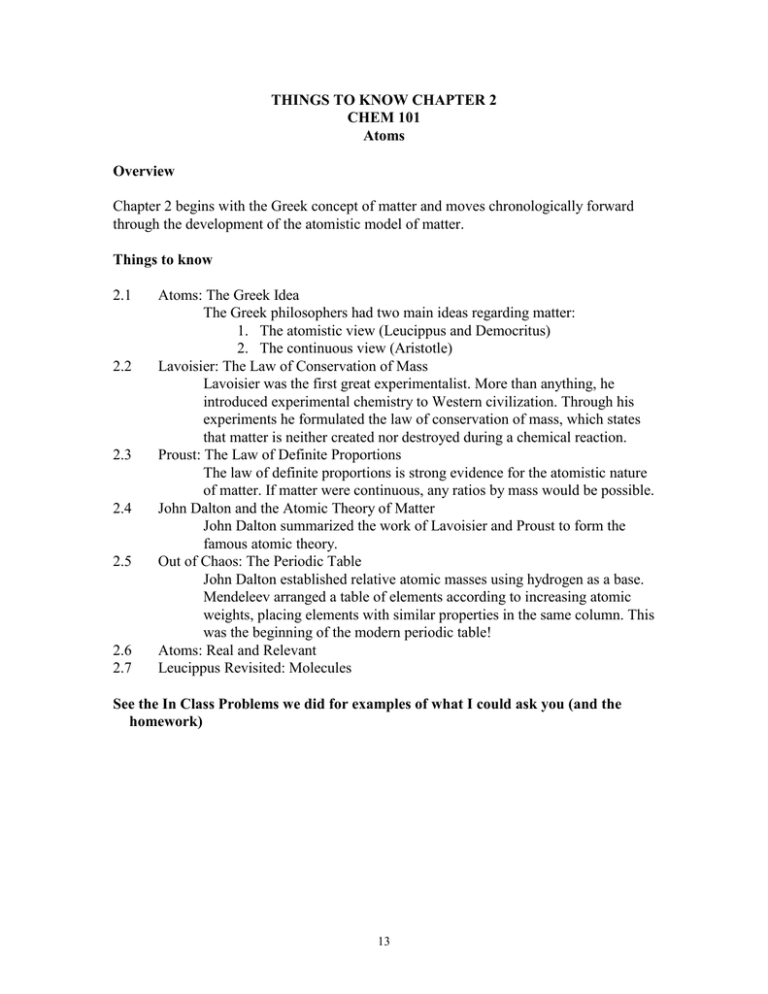
THINGS TO KNOW CHAPTER 2 CHEM 101 Atoms Overview Chapter 2 begins with the Greek concept of matter and moves chronologically forward through the development of the atomistic model of matter. Things to know 2.1 2.2 2.3 2.4 2.5 2.6 2.7 Atoms: The Greek Idea The Greek philosophers had two main ideas regarding matter: 1. The atomistic view (Leucippus and Democritus) 2. The continuous view (Aristotle) Lavoisier: The Law of Conservation of Mass Lavoisier was the first great experimentalist. More than anything, he introduced experimental chemistry to Western civilization. Through his experiments he formulated the law of conservation of mass, which states that matter is neither created nor destroyed during a chemical reaction. Proust: The Law of Definite Proportions The law of definite proportions is strong evidence for the atomistic nature of matter. If matter were continuous, any ratios by mass would be possible. John Dalton and the Atomic Theory of Matter John Dalton summarized the work of Lavoisier and Proust to form the famous atomic theory. Out of Chaos: The Periodic Table John Dalton established relative atomic masses using hydrogen as a base. Mendeleev arranged a table of elements according to increasing atomic weights, placing elements with similar properties in the same column. This was the beginning of the modern periodic table! Atoms: Real and Relevant Leucippus Revisited: Molecules See the In Class Problems we did for examples of what I could ask you (and the homework) 13
